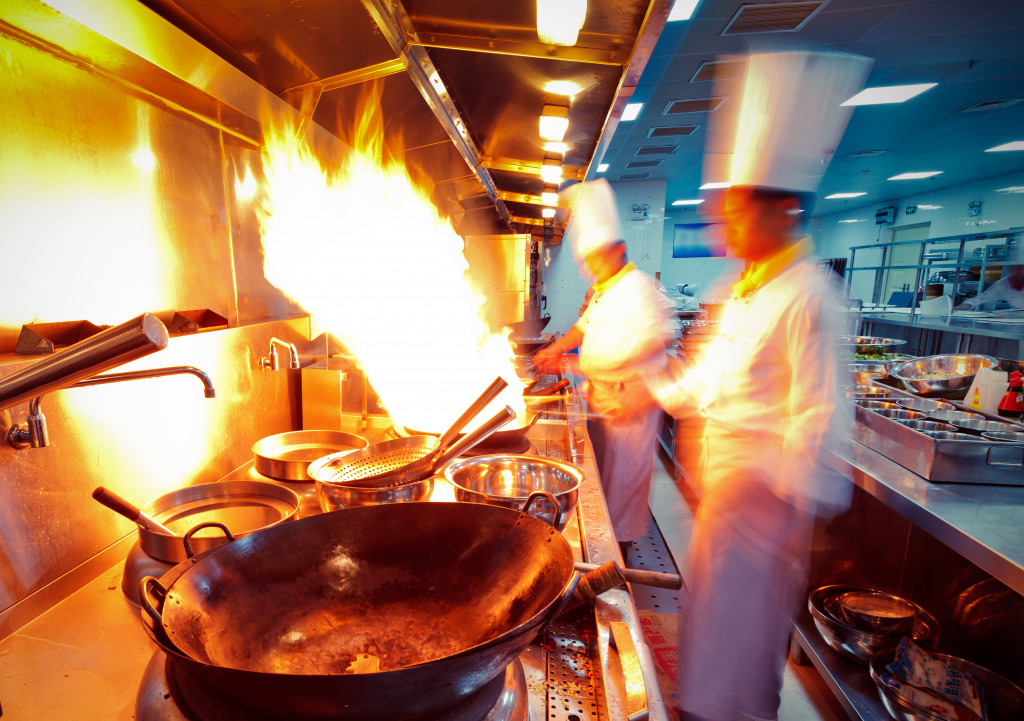- Automated processes, robotics, and meal assembly systems can help streamline food production operations and reduce manual labor costs.
- Smart inventory management systems enable businesses to monitor stock levels for maximum efficiency.
- Water safety systems such as scale and carbon filter systems provide clean water for restaurants, helping prevent contamination and breakdowns.
- AI analytics and predictive algorithms are powerful tools for gaining insights into customer data, employee performance, and team productivity.
Whether you run a small family-owned restaurant or manage a large commercial kitchen, staying ahead of the latest trends in food preparation technology can make all the difference. By embracing cutting-edge innovations, you can improve production efficiency, streamline operations and cut costs.
Learn how easy it is to invest in innovative technologies for your food preparation business to save time and money in the long run while providing an improved customer experience.
Automated Processes
Automation is critical in optimizing food preparation operations — regardless of their size or scope of service. By utilizing automated process steps, you can dramatically reduce time spent on menial tasks, which frees up resources for more complex operations or creative endeavors.
Robotics
Robots are becoming increasingly popular within commercial kitchens due to their cost effectiveness and potential savings over traditional labor costs associated with manual preparation techniques. By investing in robotic automation systems, you can easily create a streamlined workflow explicitly tailored to your menu demands.
Plus, robots won’t forget exact measurements or order orders incorrectly, so you can rest assured knowing every plate served is going out perfectly every time– all while saving resources too.
Meal Assembly Systems
These systems are perfect for streamlining food production for large-scale orders requiring multiple steps, such as catering or meal delivery services. This type of system reduces the manual labor needed for food assembly and provides a more consistent product output.
Depending on the size of your operation, you can also customize meal assembly systems to fit your specific demands. This way, you can ensure that every dish is being made to order, as requested by your customer — all while eliminating the fuss and muss associated with manual preparation.
Smart Inventory Management
Automated inventory systems are perfect for keeping track of all the items you have in stock at any given time. You can easily monitor and control your entire inventory from a centralized hub, from raw ingredients to finished dishes. This way, you don’t have to worry about running out of supplies or having to rush orders — you can easily manage your stock levels.
Water Safety
Safe water sources are essential when selecting equipment for any commercial kitchen. To ensure safe water temperatures and potable water quality, it’s necessary to invest in reliable safety measures, including the following:
Scale Inhibitor System
A quality scale inhibitor system can detect impurities in water supplies before entering cooking equipment, where they could be transferred onto food products. Not only does this help maintain regulatory standards for health & safety – but it also helps protect expensive appliances from scale build-up that could cause breakdowns leading to costly repairs or replacements down the line.
Carbon Filter System
A carbon filter system helps reduce the amount of chlorine in water supplies, helping to improve the taste and smell of food products. It also helps reduce potential health risks associated with water contaminants. You can integrate a carbon filter system with existing water systems or install one separately to ensure the highest water quality for your food preparation business.
AI Analytics Systems
AI analytics systems are great for getting insights into customer data, employee performance, and team productivity. This allows businesses to identify any weak spots within their operations quickly and accurately without going through mountains of paper reports manually.
Data Points
With access to detailed data points, restaurateurs can quickly assess their performance against competitors and adjust strategies accordingly as needed (allowing them maximum optimization no matter what changes occur). This helps you keep your food preparation business at its full potential while remaining competitive in today’s ever-evolving market.

Predictive Algorithms
With tools such as predictive ordering algorithms (which predict precisely how much stock needs reordering based on past usage) and AI-assisted scheduling (to maximize staff utilization) — businesses now have more flexibility than ever when managing their teams. This ultimately leads to improved customer satisfaction rates and higher profits for the company.
By investing in the latest food preparation technologies, you can remain at the cutting edge of efficiency and quality. Ultimately, this leads to higher customer satisfaction, more efficient operations, and improved cost savings. With all the options available, there’s no better time to upgrade your food preparation business.




